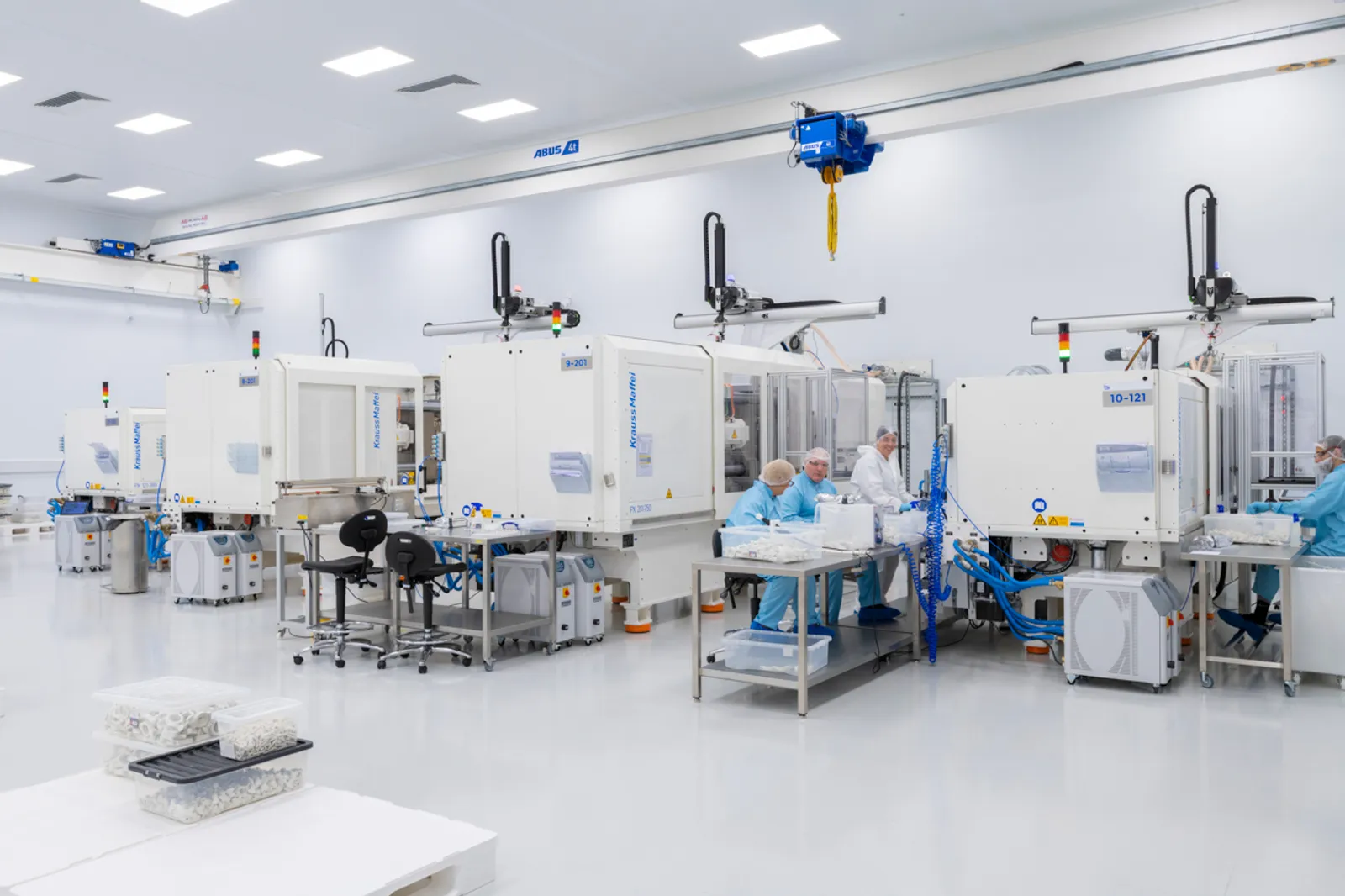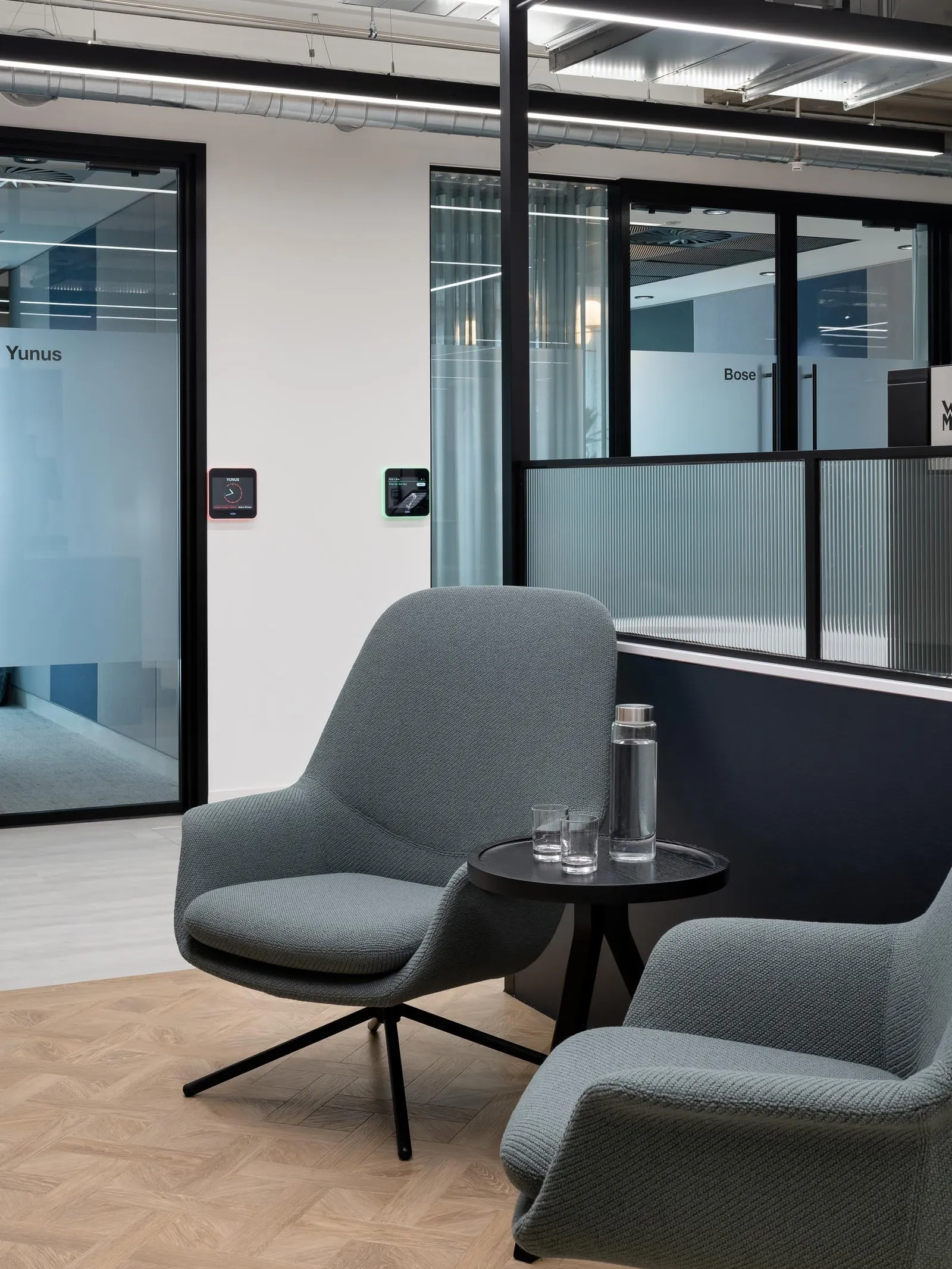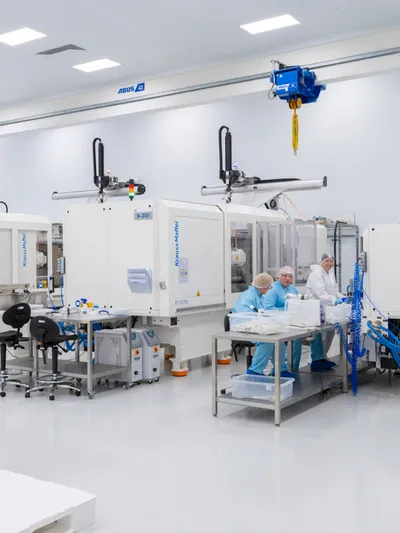Biotechnology (Biotech) laboratories are at the forefront of scientific innovation, contributing significantly to the advancement of various industries, including healthcare, agriculture, and environmental solutions.
Biotech labs are specially designed with highly controlled environments to ensure that any biological research conducted within them produces the most accurate results. The design features must be carefully considered and meticulously installed to ensure safety, efficiency, and adaptability.
In this blog, we will explore what biotech labs are and answer common questions around the critical aspects of their design.
What Is a Biotech Lab?
A biotechnology laboratory is a facility equipped for the study and manipulation of living organisms and biological systems to develop products and technologies.
Labs of this kind are used for a range of purposes such as generic engineering, pharmaceutical development and agricultural improvements, to name but a few.
Experiments that take place in these laboratories regularly require complex processes such as DNA sequencing, cell culture, and protein synthesis. Because of this, the need to integrate specialised equipment and establish highly controlled environments is significant.
Key Components of Biotech Labs
1. Wet and Dry Labs
Typically, biotech labs comprise both wet and dry lab spaces.
Wet Labs are designed for experiments involving chemicals, biological matter, and liquids. Due to this, components such as fume hoods, sinks, and proper waste disposal systems are essential features.
Dry Labs focus on computational or theoretical work, including data analysis and modelling. Therefore, the installation of computers, servers, and other relevant technology, rather than chemical handling facilities, is the main design focus.
2. Biosafety Levels (BSL)
Biotech labs are classified into biosafety levels 1 through 4, depending on the type of biological agents handled:
BSL-1: For work with low-risk agents, standard microbiological practices are sufficient.
BSL-2: For moderate-risk agents; requires limited access and specific training.
BSL-3: For agents that can cause serious or potentially lethal diseases; necessitates controlled access and specialised ventilation systems.
BSL-4: For high-risk agents with no known treatments; requires maximum containment facilities and protocols.
Each level dictates specific design and operational requirements to ensure safety and containment. The higher the level, the more crucial it is to have components that can control and contain the agents in accordance with health and safety protocols.
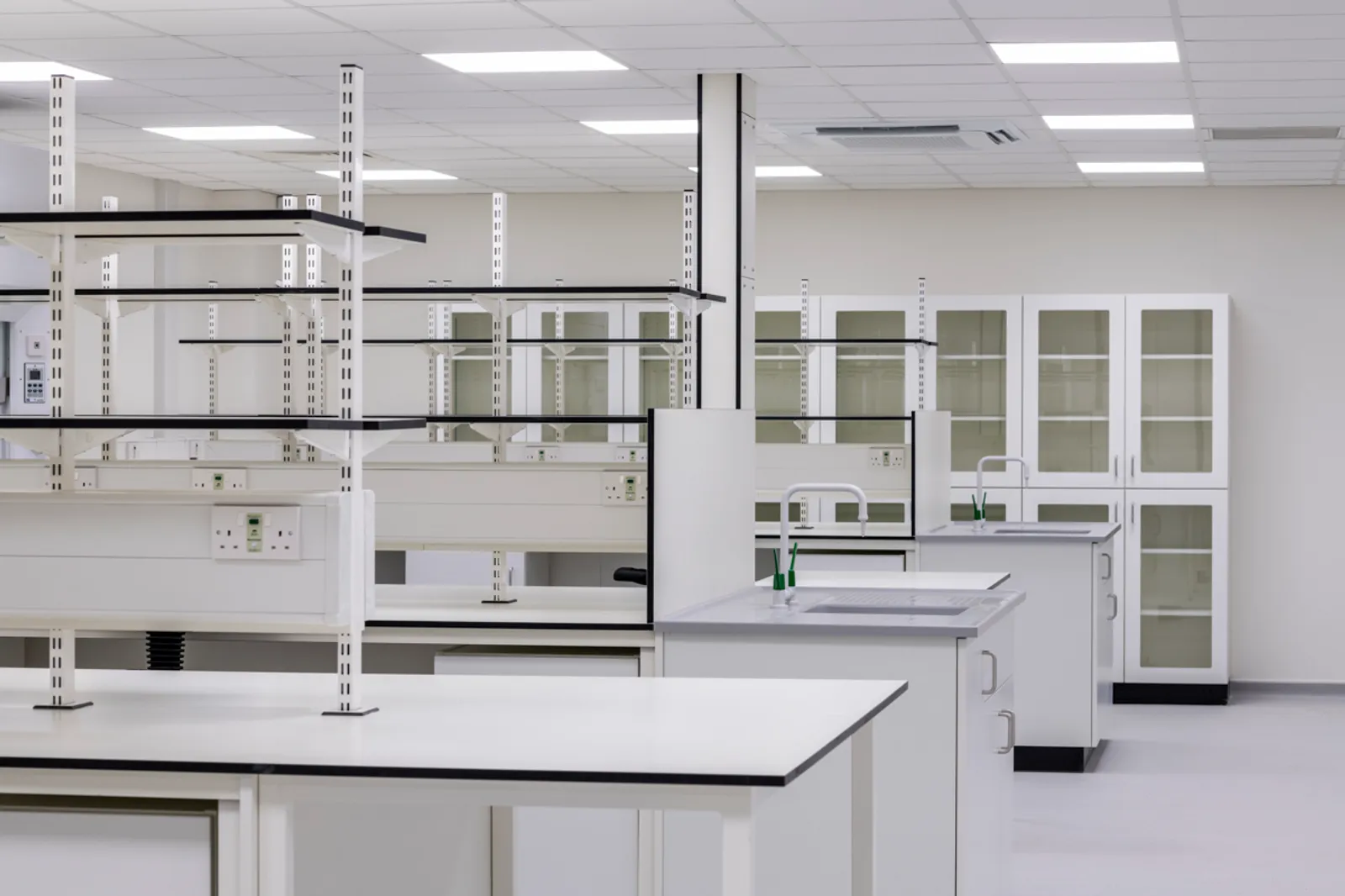
Biotech Lab Design Considerations
A multidisciplinary approach is required when contemplating how to design a biotech laboratory. Because there are many different aspects to integrate, such as architectural components, engineering and technology requirements, as well as catering to scientific expertise, designers must create a space that both matches current demands and anticipates future developments.
A successful biotech lab design will, therefore, consider:
Flexibility and Adaptability
As the field of biotechnology evolves so rapidly, it’s crucial for designers to future-proof the laboratory during the design process. To achieve this, flexibility and adaptability play a pivotal role.
Modular furniture, movable casework, and adaptable utility systems enable reconfiguration as research needs evolve.
Workflow Optimisation
An efficient workflow is critical in biotech labs. Their design must facilitate logical progression from sample receipt to analysis, minimising the potential for cross-contamination.
A clear separation between clean and dirty zones will help ensure this, enhancing productivity while also reducing the risk of ruined experiments and the need to repeat them.
Appropriate space and containment (where necessary) between different research activities to keep the workflow efficient and minimise contamination risk is also crucial.
Environmental Control
Maintaining precise environmental conditions is vital for experimental integrity. This includes temperature, humidity, and air quality control systems. Advanced HVAC systems with HEPA filtration are often employed to meet these requirements.
Safety and Compliance
Safety will always be a paramount consideration when it comes to biotech lab design. To comply with regulations such as Good Laboratory Practice (GLP) and Occupational Safety and Health Administration (OSHA) standards, designers must incorporate features like emergency showers, eyewash stations, and proper signage to ensure that labs are safe places from which to work.
Sustainability
Many modern lab designs now include sustainability features as standard. Top-functioning biotech labs will also include thoughtful design features that help minimise the laboratory's impact on the environment. Energy-efficient systems, sustainable materials, and waste reduction strategies not only reduce environmental impact but also operational costs.
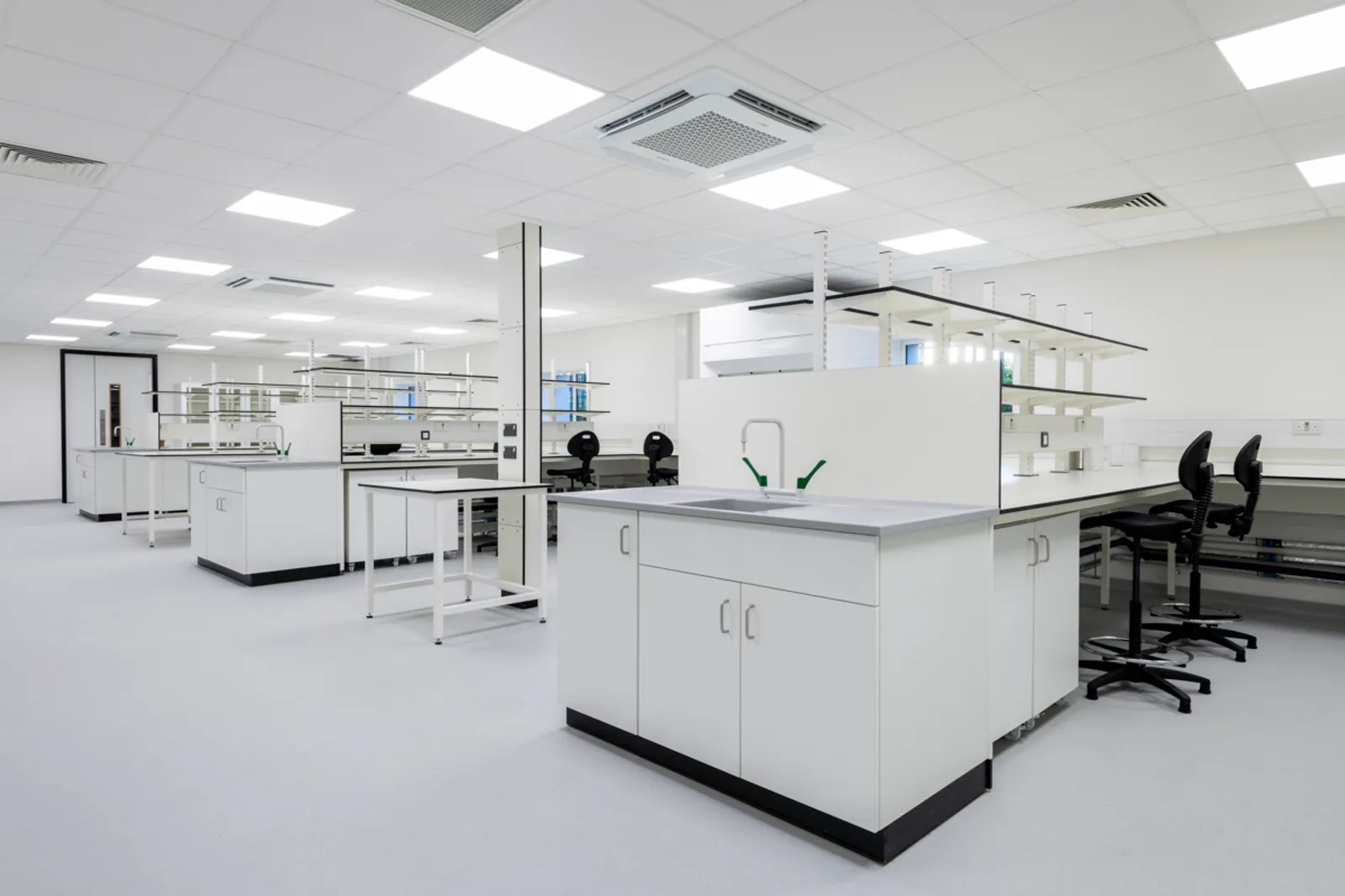
Common Questions About Biotech Labs
What is the difference between a biotech lab and a pharmaceutical lab?
While both biotech and pharmaceutical labs conduct research and development related to health and medicine, their core technologies differ. Biotech labs typically use living organisms or biological systems (such as cells, enzymes, or DNA) to develop products, whereas pharmaceutical labs tend to focus on synthesising chemical compounds. As a result, biotech labs often require enhanced containment for genetically modified organisms (GMOs), greater biological waste management, and flexible workflows for rapid prototyping.
How do containment levels affect lab design?
Containment levels, classified as Category 1 to Category 4 in the UK (mirroring international biosafety levels), dictate the infrastructure, workflows, and materials used in the lab. For example:
Cat 1 labs have minimal requirements but still need proper waste disposal and safe handling protocols.
Cat 2 labs (commonly used in biotech) require autoclaves, HEPA-filtered ventilation, restricted access, and directional airflow.
Cat 3 and 4 facilities involve more intensive design elements such as sealed rooms, double-door entry, negative pressure, and advanced PPE protocols.
Understanding which level your work requires is essential at the design phase, and it influences everything from HVAC systems to wall and floor finishes.
How long does it take to design and build a biotech lab?
Timeframes vary depending on the scope, size, and regulatory complexity. A small Cat 2 R&D lab retrofit might take 8–12 weeks, while a new-build GMP facility can take 6–12 months or more from concept to completion. Key phases include:
Feasibility and briefing (2–4 weeks)
Concept and detailed design (4–8 weeks)
Regulatory review and planning approval (if required)
Construction and commissioning (varies by complexity)
Validation and handover
Working with a partner like Area Laboratories streamlines this process and ensures critical path items (like lead times for HVAC or specialist equipment) are factored in from the outset.
Design your Biotech Lab with Area Laboratories
Biotechnology laboratories demand a considered approach to design, one that balances innovation with safety, adaptability, and compliance. At Area Laboratories, we specialise in delivering bespoke lab environments that enable advanced scientific discovery while meeting rigorous operational and regulatory standards.
We work closely with your scientific and technical stakeholders to ensure every aspect of the lab is designed for performance, longevity, and future scalability.
Planning a biotech lab project?
Speak to the team at Area Laboratories to arrange a consultation or explore how we can support your next phase of growth.
